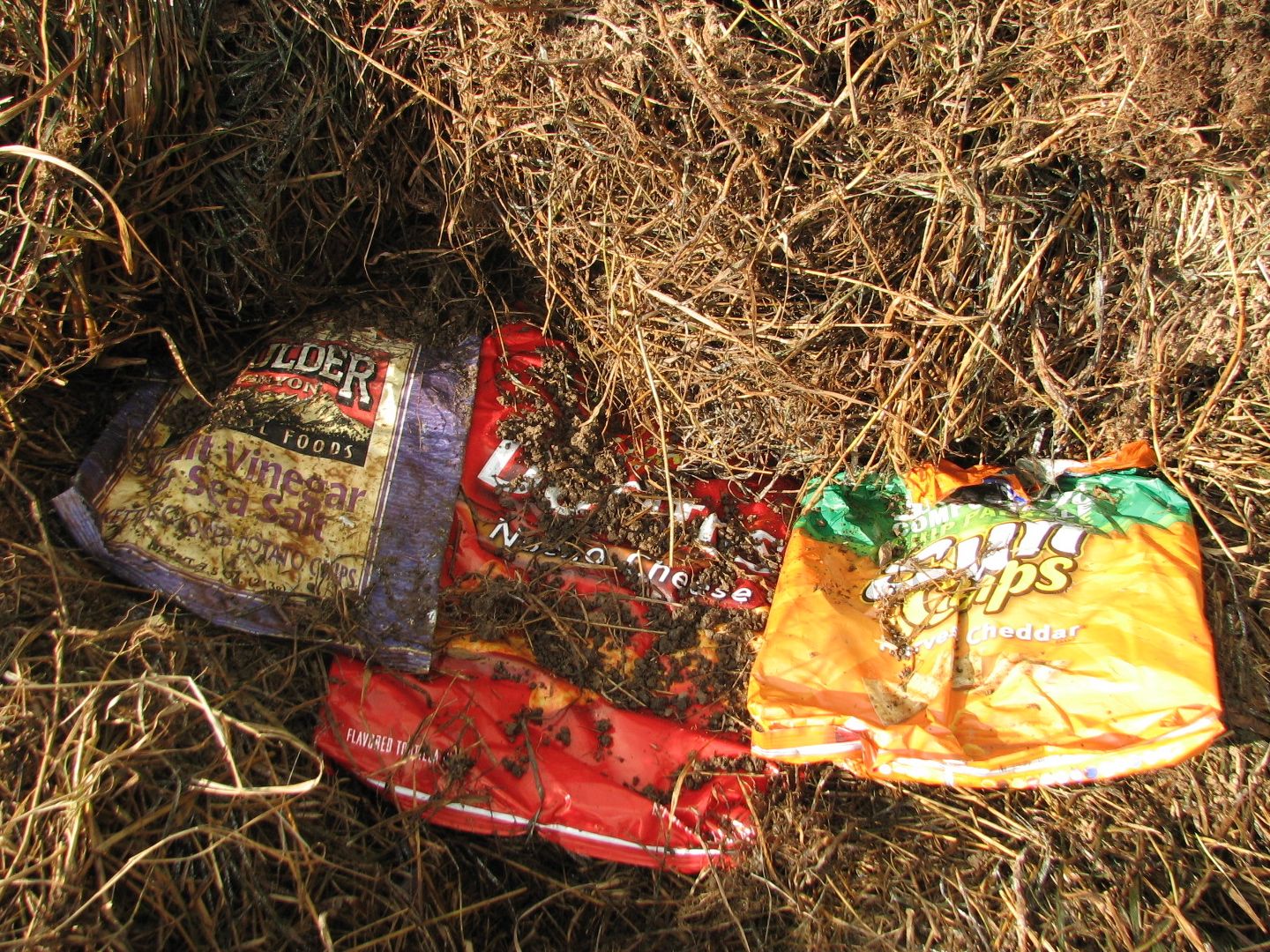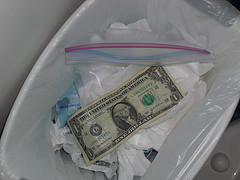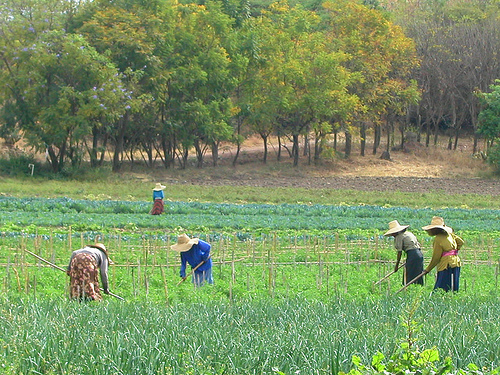One week ago, I buried two 100% compostable bags (one made from tree fiber and the other most likely from corn), along with a Doritos bag for control, in my compost pile. I wanted to see what would happen in a real environment, in the type of compost pile most people have, and how useful “compostable” bags really are.
As you can see, the bags are still there. Then again, so would a sheet of paper. Even the grass has barely started decomposition in that amount of time. But what’s notable to me is what you cannot really see in the picture. The Boulder Canyon bag, which is made from tree fiber, is wet almost through and through. The SunChips bag is just as crinkly and dry as it was one week ago.
While this is not a scientific experiment, from the layman’s eyes, the tree fiber bag appears to already be starting on the path to decomposition. Once tree fiber is wet, it begins to fall apart. This speeds the decomposition even more.
As I reported last week, SunChips is pulling its compostable packaging because of consumer complaints about the noise. It is currently working on new packaging.
The Boulder Canyon bags are quiet—even quieter than traditional bags. If SunChips had used a tree-fiber-based substrate as Boulder Canyon did, noise never would have been an issue. Plus, to the average person, the fiber-based has the appearance of rapid break-down. In packaging and consumer products, appearance is everything.
This makes me wonder why SunChips didn’t just go with fiber-based bags to begin with. Did it want to maintain visual continuity with competitive products? Was it an issue of substrate performance? SunChips are sold in much higher volumes and likely need to be stored for longer periods of time. Perhaps tree-fiber-based bags did not provide the stay-fresh power of corn-based substrates.
Whatever the reason, it is interesting to watch these bags decompose side by side. For now, the weather in central Pennyslvania holds and decomposition is possible. It will be in the mid-60s all week, so I’ll check back in with a new photo next week. I might even have an answer from SunChips about its substrate choice by then.









My SunChips bag has been in my compost tumbler for nearly 2 months now and it is not showing any signs of decomposition. However the PLA plastic salad container is nearly gone and it was put in the composter only 2 weeks earlier than the SunChips bag. I have not tried to compost a Boulder Canyon bag yet but I will pick up a bag from the natural food store on my way home from work.
SunChips does say it needs to be an a “hot, active” compost pile for 14 weeks, so that’s 3 1/2 months. But you would expect to see at least some decomposition — at least the beginnings of it.
The answer to your question is price. Bags made from corn = cheaper. The Boulder folks are paying a high cost to bring a compostable bag to market that isn’t made from a heavily subsidized food source. So, the Frito folks could have had a bag just like the Boulder folks, they just didn’t want to pay for one.